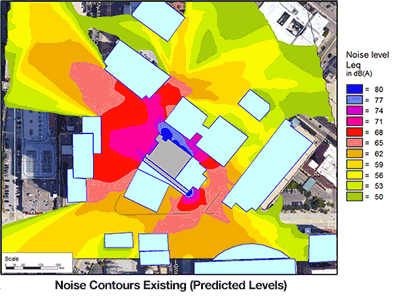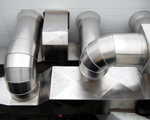Acoustical Modeling
We perform acoustical modeling for a diverse range of venues, facilities, and environments, from performance spaces, to manufacturing plants, to mining operations. Using sophisticated modeling software along with measured noise and vibration data, and engineering calculations, we predict and assess acoustics to identify potential problems and recommend solutions.

Acoustical Modeling for Architectural Design
Modeling acoustics before spaces are built can reveal architectural acoustics performance issues—arming architects, engineers, facilities managers, and building owners with acoustical modeling data and information to make informed design decisions. With sophisticated acoustical modeling software and the experience of our acoustical engineers, you can attain the desired acoustical environment.
Acoustical Modeling for Mechanical Systems
 Acoustical modeling for mechanical systems allow us to effectively collaborate with the design team to make informed mechanical equipment selections and provide recommendations for noise control. It also allows our acoustical consultants to provide comprehensive acoustical analyses and recommendations.
Acoustical modeling for mechanical systems allow us to effectively collaborate with the design team to make informed mechanical equipment selections and provide recommendations for noise control. It also allows our acoustical consultants to provide comprehensive acoustical analyses and recommendations.
Acoustical Modeling for Environmental Noise
We predict and analyze the acoustical impact of noise and vibration in urban and landscaped environments, and neighborhoods. Acoustical modeling helps us understand and predict the impact of outdoor mechanical equipment, ground transportation, industrial operations, people, and other environmental noise sources—and it helps you design facilities with better acoustical environments. In addition, we use acoustical modeling to help design appropriate solutions to comply with local noise codes.
Acoustical Modeling for Audio Systems
Acoustical modeling software allows our AV systems design professionals to predict audio performance of speaker systems in architectural environments where sound reproduction, sound clarity, and speech intelligibility are critical. Using acoustical modeling software, we import room characteristics, surface data, and technical specifications of audio systems to model acoustical environments and design custom audio systems.
